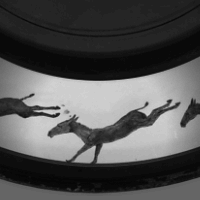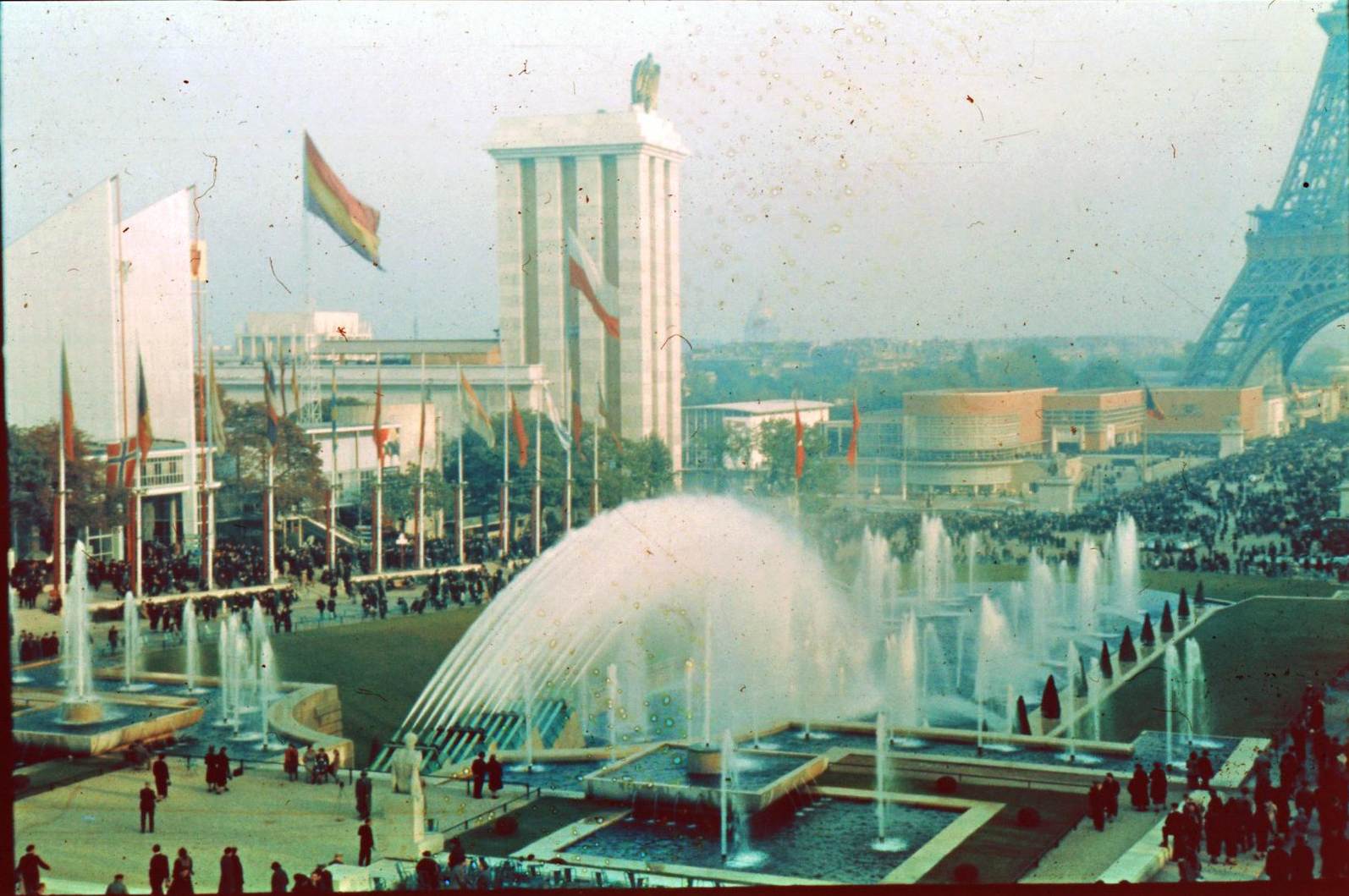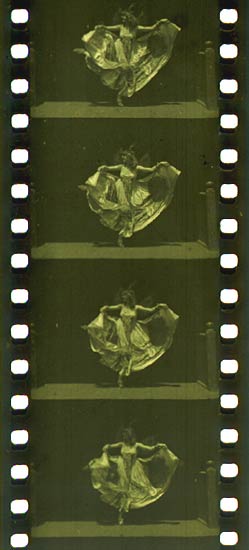|
Release Print
A release print is a copy of a film that is provided to a movie theater for exhibition. Definitions Release prints are not to be confused with other types of prints used in the photochemical post-production process: * Rush prints, or dailies, are one-light, contact-printed copies made from an unedited roll of original camera negative immediately after processing and screened to the cast and crew in order to ensure that the takes can be used in the final film. * Workprints, sometimes called cutting copies, are, like rush prints, copies of a camera negative roll, or from selected takes. A workprint may be roughly corrected for brightness and color balance. The prints are used for editing before the negative itself is conformed, or cut to match the edited workprint. * An answer print is made either from the cut camera negative or an interpositive, depending on the production workflow, in order to verify that the grading ("timing" in American English) conforms to specificati ... [...More Info...] [...Related Items...] OR: [Wikipedia] [Google] [Baidu] |
Film
A film, also known as a movie or motion picture, is a work of visual art that simulates experiences and otherwise communicates ideas, stories, perceptions, emotions, or atmosphere through the use of moving images that are generally, since the 1930s, synchronized with sound and (less commonly) other sensory stimulations. Etymology and alternative terms The name "film" originally referred to the thin layer of photochemical emulsion on the celluloid strip that used to be the actual medium for recording and displaying motion pictures. Many other terms exist for an individual motion-picture, including "picture", "picture show", "moving picture", "photoplay", and "flick". The most common term in the United States is "movie", while in Europe, "film" is preferred. Archaic terms include "animated pictures" and "animated photography". "Flick" is, in general a slang term, first recorded in 1926. It originates in the verb flicker, owing to the flickering appearance of early films ... [...More Info...] [...Related Items...] OR: [Wikipedia] [Google] [Baidu] |
Digital Intermediate
Digital intermediate (DI) is a motion picture finishing process which classically involves digitizing a motion picture and manipulating the color and other image characteristics. Definition and overview A digital intermediate often replaces or augments the photochemical timing process and is usually the final creative adjustment to a movie before distribution in theaters. It is distinguished from the telecine process in which film is scanned and color is manipulated early in the process to facilitate editing. However the lines between telecine and DI are continually blurred and are often executed on the same hardware by colorists of the same background. These two steps are typically part of the overall color management process in a motion picture at different points in time. A digital intermediate is also customarily done at higher resolution and with greater color fidelity than telecine transfers. Although originally used to describe a process that started with film scanning ... [...More Info...] [...Related Items...] OR: [Wikipedia] [Google] [Baidu] |
Aspect Ratio (image)
The aspect ratio of an image is the ratio of its width to its height. It is expressed as two numbers separated by a colon, in the format width:height. Common aspect ratios are 1.85:1 and 2.39:1 in cinematography, 4:3 and 16:9 in television, and 3:2 in still photography and 1:1: Used for square images, often seen on social media platforms like Instagram, 21:9: An ultrawide aspect ratio popular for gaming and desktop monitors. Some common examples The common film aspect ratios used in cinemas are 1.85:1 and 2.39:1.The 2.39:1 ratio is commonly labeled 2.40:1, e.g., in the American Society of Cinematographers' ''American Cinematographer Manual'' (Many widescreen films before the 1970 Society of Motion Picture and Television Engineers, SMPTE revision used 2.35:1). Two common videography, videographic aspect ratios are 4:3 (1.:1), the universal video format of the 20th century, and 16:9 (1.:1), universal for high-definition television and European digital television. Other cinematic ... [...More Info...] [...Related Items...] OR: [Wikipedia] [Google] [Baidu] |
Movie Projector
A movie projector (or film projector) is an optics, opto-mechanics, mechanical device for displaying Film, motion picture film by projecting it onto a movie screen, screen. Most of the optical and mechanical elements, except for the illumination and sound devices, are present in movie cameras. Modern movie projectors are specially built video projectors (see also digital cinema). Many projectors are specific to a particular film gauge and not all movie projectors are film projectors since the use of film is required. Predecessors The main precursor to the movie projector was the magic lantern. In its most common setup it had a concave mirror behind a light source to help direct as much light as possible through a painted glass picture slide and a lens, out of the lantern onto a screen. Simple mechanics to have the painted images moving were probably implemented since Christiaan Huygens introduced the apparatus around 1659. Initially, candles and oil lamps were used, but oth ... [...More Info...] [...Related Items...] OR: [Wikipedia] [Google] [Baidu] |
Tasma
Tasma (Russian: ''Тасма'') is a Russian GOST and ISO certified manufacturer of black-and-white and colour photographic films. It also manufactures adhesive tape and demineralized water. Located in Kazan, Russia, it has been in operation since 1933 (starting as "Film Factory No. 8"). The name ''Tasma'' is derived from the Russian phrase ''Татарские светочувствительные материалы'' ("''Tatarskie Sveto Materialiy''"), meaning "Tatar Sensitized Materials"; this name was adopted by the company in 1974. During World War II, only Tasma's Kazan factory remained in operation, supplying the entirety of domestic Soviet photographic material for the war effort. For this effort, it was awarded a medal for the Order of the Red Banner of Labor in 1944. The company manufactures black and white negative films KN-1, KN-2, and KN-3, which are popular with photographers in Russia as well as motion picture cinematographers internationally. The company provid ... [...More Info...] [...Related Items...] OR: [Wikipedia] [Google] [Baidu] |
Ilford Photo
Harman Technology Limited, trading as Ilford Photo, is a UK-based manufacturer of photographic materials known worldwide for its Ilford branded black-and-white film, papers and chemicals and other analog photography supplies. Historically it also published the '' Ilford Manual of Photography'', a comprehensive manual of everything photographic, including the optics, physics and chemistry of photography, along with recipes for many developers. Under the ownership of the industrial conglomerate ICI in the 1960s, the company produced a range of Ilfochrome (Cibachrome) and Ilfocolor colour printing materials at a new plant in Switzerland developed in partnership with the Swiss company CIBA-Geigy, which later acquired ICI's shares. By the 2000s, as the UK/Swiss company Ilford Imaging, the decline of the film market saw the UK company in receivership by 2004, but rescued by a management buy-out, Harman Technology Ltd, which today continues the production of traditional black-and-w ... [...More Info...] [...Related Items...] OR: [Wikipedia] [Google] [Baidu] |
Agfa-Gevaert
Agfa-Gevaert N.V. (Agfa) is a Belgian-German multinational corporation that develops, manufactures, and distributes analogue and digital imaging products, software, and systems. The company began as a dye manufacturer in 1867. In 1925, the company merged with several other German chemical companies to become chemicals giant IG Farben. IG Farben would go on to play major role in the economy of Nazi Germany. It extensively employed forced labour during the Nazi period, and produced Zyklon B poison gas used in the Holocaust. IG Farben was disestablished by the Allies in 1945. AGFA was reconstituted (as a subsidiary of Bayer) from the remnants of IG Farben in 1952. Agfa photographic film and cameras were once prominent consumer products. In 2004, the consumer imaging division was sold to a company founded via management buyout. AgfaPhoto GmbH, as the new company was called, filed for bankruptcy after a year, [...More Info...] [...Related Items...] OR: [Wikipedia] [Google] [Baidu] |
Fujifilm
, trading as , or simply Fuji, is a Japanese Multinational corporation, multinational Conglomerate (company), conglomerate headquartered in Tokyo, Japan, operating in the areas of photography, optics, Office supplies, office and Biomedical engineering, medical electronics, biotechnology, and Chemical substance, chemicals. The company started as a manufacturer of photographic films, which it still produces. Fujifilm products include document solutions, medical imaging and diagnostics equipment, cosmetics, Medication, pharmaceutical drugs, regenerative medicine, stem cells, Contract manufacturing organization, biologics manufacturing, magnetic tape data storage, Optical coating, optical films for flat-panel displays, Optical instrument, optical devices, photocopiers, printers, digital cameras, Color photography, color films, color paper, Photographic processing, photofinishing and graphic arts equipment and materials. Fujifilm is part of the Sumitomo Mitsui Financial Group financia ... [...More Info...] [...Related Items...] OR: [Wikipedia] [Google] [Baidu] |
DuPont
Dupont, DuPont, Du Pont, duPont, or du Pont may refer to: People * Dupont (surname) Dupont, also spelled as DuPont, duPont, Du Pont, or du Pont is a French surname meaning "of the bridge", historically indicating that the holder of the surname resided near a bridge. , the name was the fourth most popular surname in Belgium, and , i ..., a surname of French origin * Du Pont family, one of the wealthiest families in the United States Companies * DuPont, one of the world's largest chemical companies * Du Pont Motors, a marine engine and automobile manufacturer from 1919 to 1931 * Dupont Brewery, a brewery in Belgium Places in the United States * Dupont, Colorado, an unincorporated community * Du Pont, Georgia, a town * Dupont, Indiana, a town * Dupont, Pointe Coupee Parish, Louisiana, an unincorporated community * Dupont, Ohio, a village * Dupont, Pennsylvania, a borough * Dupont, Tennessee, a community * DuPont, Washington, a city * Dupont, Wisconsin, a town * DuPont ... [...More Info...] [...Related Items...] OR: [Wikipedia] [Google] [Baidu] |
ORWO
ORWO (for ''ORiginal WOlfen'') is a registered trademark of the company ORWO Net GmbH, based in Wolfen, Germany, Wolfen and is also traditionally known for black and white film products, made in Germany and sold under the ORWO brand. ORWO was established in East Germany in 1964 as a brand for photographic film and magnetic tape, mainly produced at the former ''ORWO Filmfabrik Wolfen'' (now CChemiepark Bitterfeld-Wolfen, Chemical Park Bitterfeld-Wolfen). The Wolfen factory was founded by Agfa-Gevaert, AGFA (Aktien-Gesellschaft für Anilin-Fabrikation) in 1910, and in 1936 developed Agfacolor, Agfacolor Neu, the first modern colour film which incorporated dye couplers. The division of Germany after World War II saw AGFA divided, into ''Agfa AG, Leverkusen'' in West Germany, and ''VEB Film und Chemiefaserwerk Agfa Wolfen'' in East Germany, which eventually rebranded as ORWO. The company was privatised in 1990 as ORWO AG, but film production ceased at Wolfen in 1994 following the l ... [...More Info...] [...Related Items...] OR: [Wikipedia] [Google] [Baidu] |
Film Stock
Film stock is an analog medium that is used for recording motion pictures or animation. It is recorded on by a movie camera, developed, edited, and projected onto a screen using a movie projector. It is a strip or sheet of transparent plastic film base coated on one side with a gelatin emulsion containing microscopically small light-sensitive silver halide crystals. The sizes and other characteristics of the crystals determine the sensitivity, contrast and resolution of the film.Karlheinz Keller et al. "Photography" in Ullmann's Encyclopedia of Industrial Chemistry, 2005, Wiley-VCH, Weinheim. The emulsion will gradually darken if left exposed to light, but the process is too slow and incomplete to be of any practical use. Instead, a very short exposure to the image formed by a camera lens is used to produce only a very slight chemical change, proportional to the amount of light absorbed by each crystal. This creates an invisible latent image in the emulsion, which ... [...More Info...] [...Related Items...] OR: [Wikipedia] [Google] [Baidu] |
Eastman Kodak
The Eastman Kodak Company, referred to simply as Kodak (), is an American public company that produces various products related to its historic basis in film photography. The company is headquartered in Rochester, New York, and is incorporated in New Jersey. It is best known for photographic film products, which it brought to a mass market for the first time. Kodak began as a partnership between George Eastman and Henry A. Strong to develop a film roll camera. After the release of the Kodak camera, Eastman Kodak was incorporated on May 23, 1892. Under Eastman's direction, the company became one of the world's largest film and camera manufacturers, and also developed a model of welfare capitalism and a close relationship with the city of Rochester. During most of the 20th century, Kodak held a dominant position in photographic film, and produced a number of technological innovations through heavy investment in research and development at Kodak Research Laboratories. Kodak produc ... [...More Info...] [...Related Items...] OR: [Wikipedia] [Google] [Baidu] |




